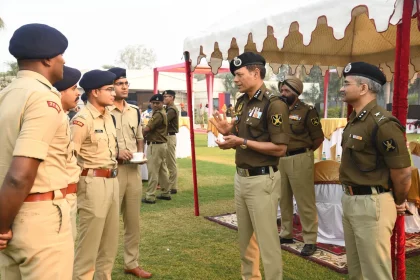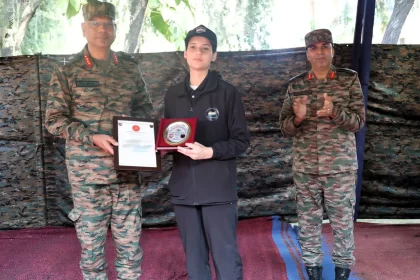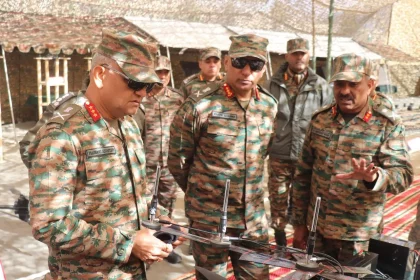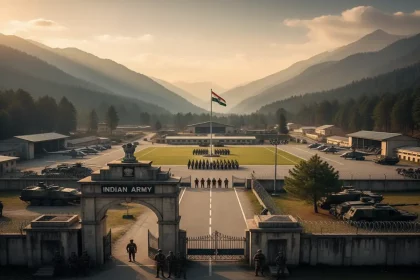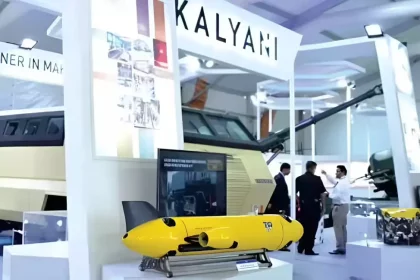DG BSF Daljit Singh Chawdhary Interacts with IPS Officers of 74 & 77 RR Batch in New Delhi
Session highlights BSF’s history, operational role, challenges, and future-ready border management strategies.
National Integration Tour Culminates with Inspiring Interaction with GOC White Knight Corps
Operation Sadbhavana initiative exposes Rajouri & Poonch students to India’s military heritage, fostering unity, leadership and patriotism.
Lt Gen Pratik Sharma Reviewes Advanced Drone Warfare Capabilities
Lt Gen Pratik Sharma Reviews Northern Command’s Drone Warfare Preparedness and Technological Advancements.
New Military Base in Assam Strengthens India’s Border Security and Intelligence Capabilities
New Lachit Borphukan Military Station near Bangladesh border to enhance surveillance, intelligence, and rapid deployment in Assam’s sensitive Dhubri district.
Kalyani Strategic Systems Bags ₹250-Crore MoD Contracts to Boost India’s Maritime Defence Capabilities
Kalyani Strategic Systems’ ₹250-Crore MoD Deal Strengthens India’s Underwater Defence and Maritime Self-Reliance.
Nyoma Airbase Commissioned as World’s Highest Fighter Base at 13,700 ft, Boosting India’s Strategic Reach in Ladakh
Nyoma Airbase: India’s New High-Altitude Power Centre Strengthening Air Dominance Along the LAC.

